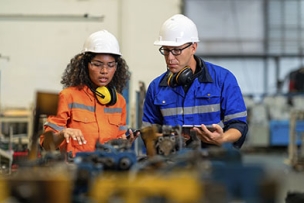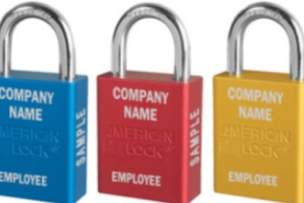3 Unexpected Ways Shop Floor Matting Keeps Workers Safe
THE BETTER MRO SAFETY HOW-TO SERIES
A solid foundation for safety compliance—in any workplace—starts with proper matting.
The first and most obvious benefit of installing mats is the prevention of slips, trips and falls.
OSHA’s basic requirements for walking and working surfaces offer general guidance for reducing those … but the ANSI standards give metalworking safety managers more context and more concrete parameters for setting up effective programs to prevent falls in the first place.
In 2018, slips, trips and falls accounted for three of the top 10 most disabling workplace injuries—with same-level falls accounting for 19.2 percent of all injuries, resulting in $11.2 billion in direct costs for employers.
Slips or trips without falls cost another $2.3 billion.
Given the staggering numbers, using matting to prevent these injuries in metalworking shops should be a no-brainer.
How do mats do it?
Texture and composition both contribute to the anti-slip grip of matting. Diamond grid patterns give shoes more points of contact, basically more to hold on to. The grit of a mat, or how much friction and traction it provides, depends on what it’s made of.
Mats with higher grit work well where oily substances or lubricants might find their way to the floor.
Since wet work areas like eye and face wash stations also increase the likelihood of slips and falls, mats with holes for drainage must be used in those places to guard against the added threat.
But helping your customers and employees get a better grip on their surroundings is just one of the ways matting helps keep the workplace safe. Here are three more reasons they provide value.
Anti-fatigue mats reduce stress on joints and minimize back, leg and foot fatigue.
Ergonomic foam distributes a person’s weight, helping to improve energy and productivity.
When standing on a hard surface—like steel or concrete—workers tend to lock their legs. This restricts circulation; blood pools in the feet; and can lead to swooning—and a loss of balance.
The softness of anti-fatigue mats forces your muscles to make micromovements to help you keep your balance. That leads to better blood flow throughout the body and less soreness in joints and feet
Beyond the health benefits, anti-fatigue matting boosts productivity.
One study showed a 23 percent reduction in absenteeism over two years after mats were installed, and a 2.2 percent net increase in overall worker productivity.
So to boost morale, start from the ground up.
In 2016, exposure to electric current placed sixth on the list of occupational exposures leading to fatal on-the-job injury.
The top OSHA electrical violations involve lockout/tagout and electrical wiring, but having proper matting adds an extra layer of protection.
So what’s the difference between conductive and non-conductive mats?
Conductive mats protect sensitive electronic equipment. They actually ground the worker, allowing any small electrostatic charges to flow through them into the ground, away from valuable circuitry.
Mats used to protect workers do the complete opposite. Whether you know them as non-conductive, switchboard or dielectric matting, this floor covering prevents energy from flowing across its surface—and must conform to ANSI standards.
Non-conductive matting insulates workers from receiving high-voltage electrical shocks. These mats not only prevent manufacturing accidents, they can save lives.
Identifying hazards is a great way to avoid workplace accidents in the first place.
Using OSHA’s floor marking standards, properly color-coded mats keep workers walking on safe paths and help them quickly identify equipment, storage and hazardous areas.
While not in the guidelines, yellow is commonly used for aisleways and traffic areas—showing where it is safe to pass.
White can be used to demarcate workstations or displays.
And everyone knows that red and white stripes signify a danger zone—areas to be kept clear for safety or compliance reasons.
Whether you’re looking to prevent slips, trips and falls to …
- Guard against electric shocks
- Help your workers identify hazards
- Or let everyone move around as safely as possible
Strategic use of matting is an effective—and less expected—way to keep your facility and your workers safe on the job.
For more expert advice on how to ensure your shop’s safety and improve MRO, visit https://mscdirect.com/betterMRO.




Talk to Us!
Leave a reply
Your email address will not be published. Required fields are marked *